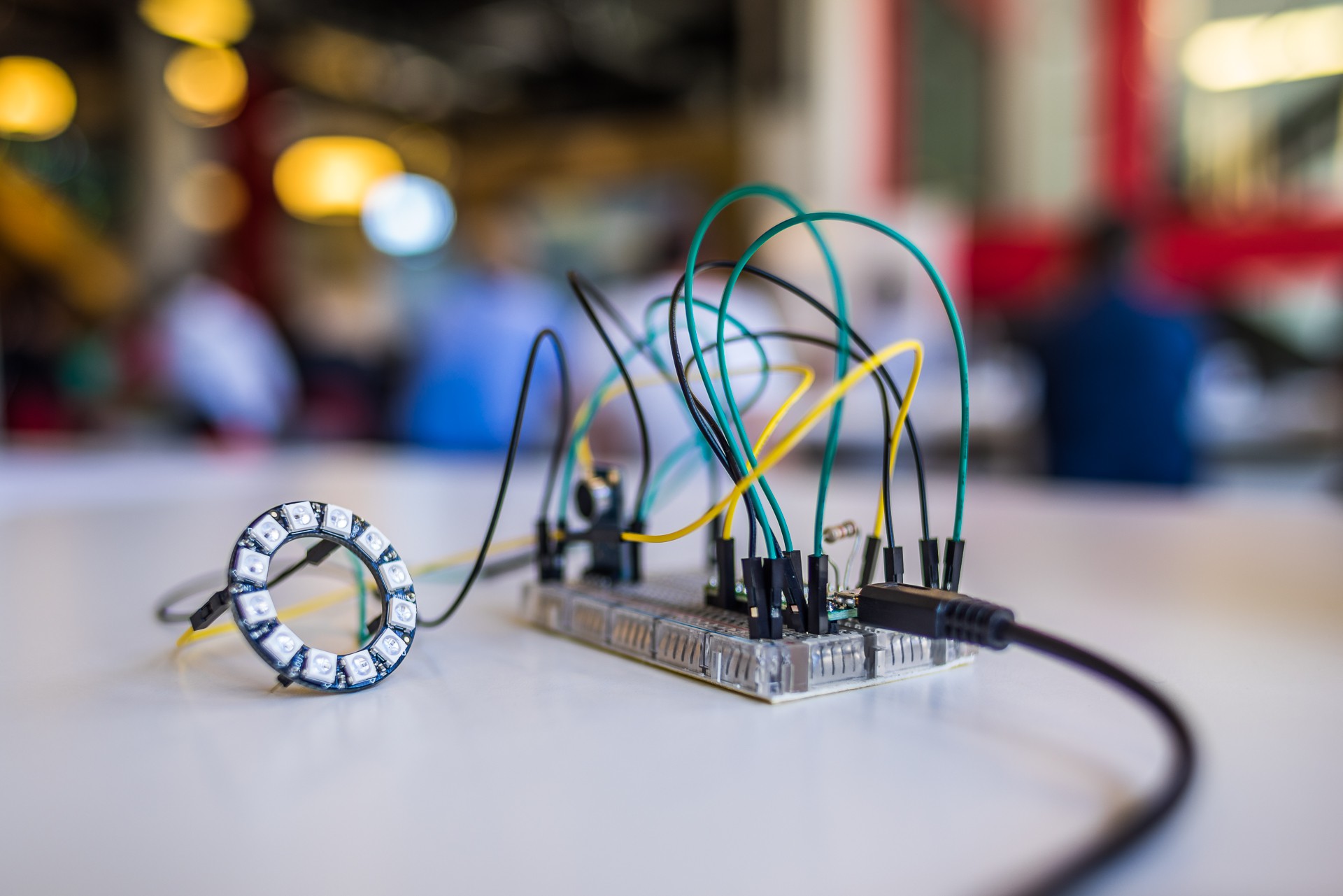Current state:
I've switched out the mic for better gain, and now have a small Neopixel ring for display.

Updated sketch
#include <Adafruit_NeoPixel.h>
#include <avr/power.h>
#include <Audio.h>
#include <Wire.h>
#include <SPI.h>
#include <SD.h>
#define PIN 5
Adafruit_NeoPixel strip = Adafruit_NeoPixel(12, PIN, NEO_GRB + NEO_KHZ800);
AudioInputAnalog adc1;
AudioAnalyzeFFT1024 myFFT;
AudioConnection patchCord1(adc1, 0, myFFT, 0);
int dled = 13;
void setup() {
pinMode(dled, OUTPUT);
AudioMemory(12);
// Configure the window algorithm to use
myFFT.windowFunction(AudioWindowHanning1024);
strip.begin();
strip.show(); // Initialize all pixels to 'off'
}
void loop() {
float n;
int i;
int p;
if (myFFT.available()) {
// each time new FFT data is available
for (i=0; i<strip.numPixels(); i++) {
n = myFFT.read(i+5);
if (n > 0.05) {
p = (n+i)*1000;
digitalWrite(dled, HIGH);
strip.setPixelColor(i, Wheel(p));
strip.show();
}
}
digitalWrite(dled, LOW);
colorWipe(strip.Color(0, 0, 0), 1);
}
}
// Fill the dots one after the other with a color
void colorWipe(uint32_t c, uint8_t wait) {
for(uint16_t i=0; i<strip.numPixels(); i++) {
strip.setPixelColor(i, c);
strip.show();
delay(wait);
}
}
// Input a value 0 to 255 to get a color value.
// The colours are a transition r - g - b - back to r.
uint32_t Wheel(byte WheelPos) {
WheelPos = 255 - WheelPos;
if(WheelPos < 85) {
return strip.Color(255 - WheelPos * 3, 0, WheelPos * 3);
} else if(WheelPos < 170) {
WheelPos -= 85;
return strip.Color(0, WheelPos * 3, 255 - WheelPos * 3);
} else {
WheelPos -= 170;
return strip.Color(WheelPos * 3, 255 - WheelPos * 3, 0);
}
}
 Richard Hogben
Richard Hogben
Discussions
Become a Hackaday.io Member
Create an account to leave a comment. Already have an account? Log In.